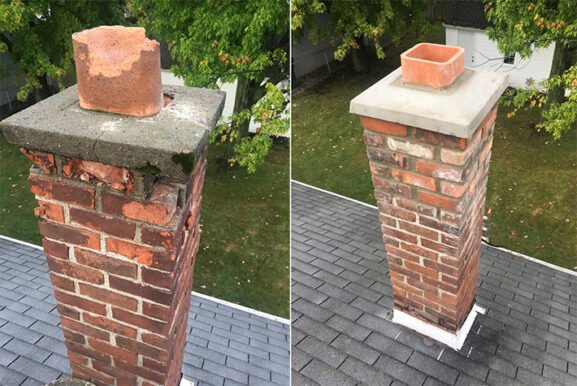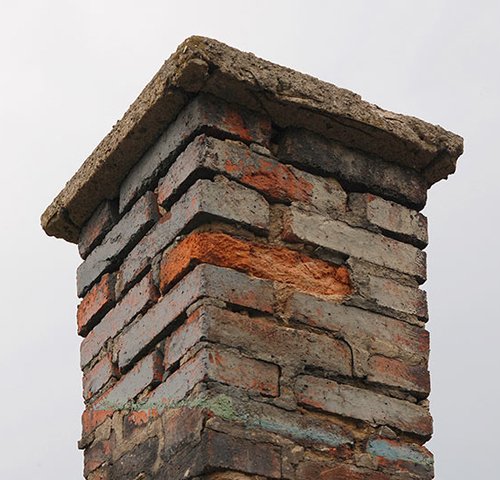Understanding Brick Chimney Repair Cost and What Influences It
Key Takeaways
- Brick chimney repair costs typically range from $300 to over $4,000 depending on the severity and scope of damage
- Factors like labor rates, chimney height, brick matching, and extent of deterioration can significantly influence pricing
- Ignoring small cracks or minor mortar issues often leads to more expensive structural repairs later
- Hiring experienced masons and getting a detailed inspection report helps ensure cost-effective and safe repair work
Why Brick Chimneys Require Regular Attention
Brick chimneys are exposed to constant weather shifts, moisture, and temperature changes that can wear down their structural integrity over time. While they’re designed to last for decades, they still need regular care to prevent common issues like spalling bricks, crumbling mortar joints, and leaning stacks.
Homeowners often delay repairs until major problems arise, but early intervention can keep costs much lower. Even small cracks in the brick or deteriorating mortar can allow moisture to seep in, causing further internal damage that isn’t immediately visible.
Typical Price Range for Brick Chimney Repair
Most brick chimney repairs fall into a range from $300 to $4,000, depending on the issue. For example:
- Tuckpointing (replacing deteriorated mortar): $500 to $2,500
- Brick replacement: $300 to $1,200 per section
- Crown repair or replacement: $600 to $2,000
- Partial chimney rebuild: $1,000 to $3,500
- Full chimney rebuild: $4,000 and above
These figures vary by region, especially in areas with high labor costs or older historic homes where matching materials can be more difficult.
Factors That Affect Brick Chimney Repair Costs
Extent of Damage
The scope of the damage plays a big role in determining the final cost. Superficial cracks or missing mortar can be fixed relatively easily, but structural issues like leaning chimneys or widespread spalling often require full rebuilds or reinforcements, which are much more expensive.
Chimney Height and Accessibility
Taller chimneys or those located in hard-to-reach places (like steep rooftops) require more safety equipment and labor, increasing costs. Chimneys on multi-story homes will typically cost more to repair than those on single-story structures.
Matching Existing Materials
If your home is older, the bricks used during original construction may no longer be in production. Finding a close match for replacement can raise the cost. Aesthetic continuity is important in many neighborhoods or for resale value, so most homeowners opt to match as closely as possible.
Local Labor Rates and Permit Requirements
Labor rates can vary significantly depending on your location. In regions like New York or New Jersey, where masonry specialists are in high demand, you might pay more than the national average. Some municipalities also require permits for certain types of chimney work, which can add extra costs.
When Minor Repairs Turn Into Major Expenses
A common mistake homeowners make is ignoring small signs of damage, such as light cracking or flaky mortar. These might not seem urgent but can cause major deterioration when left untreated. Water intrusion is the biggest threat—once moisture enters the masonry system, freeze-thaw cycles can cause bricks to crack or pop out entirely.
Repairing minor damage early (even if it costs a few hundred dollars) can help avoid structural rebuilds that cost thousands. The National Association of Home Builders emphasizes regular home maintenance as a way to significantly reduce long-term costs and preserve property value.
Choosing the Right Masonry Professional Matters
Brick chimney repairs aren’t a DIY project for most homeowners. Improper repair work can worsen existing issues and even pose safety hazards. It’s important to work with licensed and experienced professionals who specialize in chimney structures.
Look for contractors who provide:
- Detailed inspection reports with photos
- Clear estimates with itemized pricing
- Experience working on similar homes or chimney types
- References from past clients
Avoid hiring based solely on price. Low bids often skip necessary steps, use subpar materials, or underestimate the actual damage, leading to more expenses down the line.
The Importance of Moisture Prevention After Repair
Once your brick chimney has been repaired, it’s wise to invest in preventative measures to extend its lifespan. Common protective strategies include:
- Chimney waterproofing using vapor-permeable sealants
- Crown sealing to prevent water intrusion from above
- Installing or replacing a chimney cap to block rain and debris
- Routine inspections every one to two years
Moisture is the number one cause of chimney deterioration. Even newly repaired brickwork can degrade if it’s not properly sealed and protected. Preventive work is usually inexpensive compared to future repairs.
How to Budget Wisely for Upcoming Chimney Work
Setting aside funds for chimney maintenance might not seem urgent, but it can save you from emergency repairs that disrupt your home and budget. It’s smart to schedule annual chimney inspections, especially before winter when freeze-thaw cycles intensify damage.
Homeowners in regions with colder climates or high humidity should be particularly proactive. If you’re planning other roofing or masonry work, see if combining services can reduce labor costs. Ask for detailed repair timelines, so you know which issues must be addressed immediately and which can wait a season.
Investing in the Longevity of Your Home
Taking care of a brick chimney is more than a repair job—it’s part of preserving your home’s overall safety and structural soundness. Neglected chimneys can lead to water damage, pest infestations, and even collapse in severe cases. By staying ahead of small problems and budgeting for quality repair work, you’re not just maintaining your chimney—you’re protecting your entire home investment.

